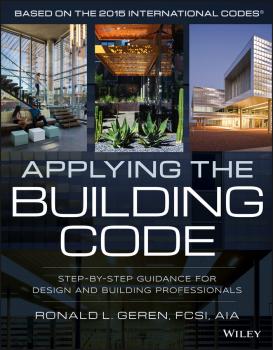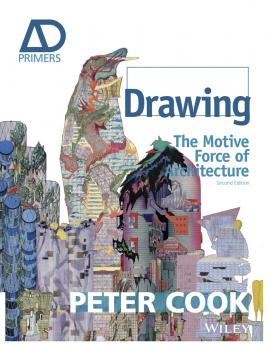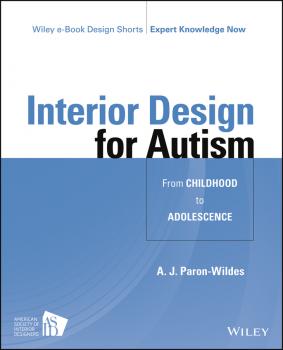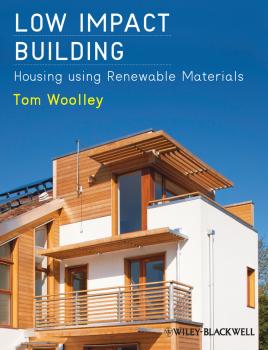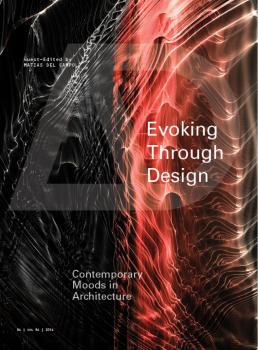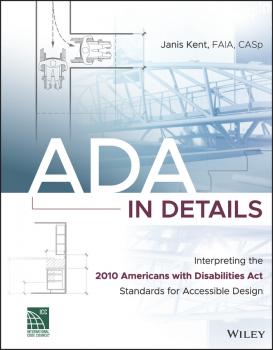Изобразительное искусство, фотография
Различные книги в жанре Изобразительное искусство, фотографияDesigning With Light. The Art, Science and Practice of Architectural Lighting Design
A comprehensive introduction to the theory and practice of lighting design Designing With Light: The Art, Science, and Practice of Architectural Lighting Design is a comprehensive introduction to the intelligent use of lighting to define and enhance a space. The book explores all aspects of the process, including aesthetics, technology, and practicalities, in a clear, concise manner designed to provide the reader with a full working knowledge of lighting design. Color illustrations throughout demonstrate the real-world effects of the concepts presented, and the companion website offers video animations and exercises to better illuminate the art and science of lighting. The book addresses the considerations that should be a part of any designer's process, and provides thorough guidance on meeting the various demands with smarter design. Lighting is an essential element of interior design, and despite its ubiquity, is difficult to truly master. A designer with a fundamental and conceptual understanding of light is empowered to create simple, typical spaces, or work intelligently with lighting consultants on more complex projects. Designing With Light contains special discussions on color, light, and health, as well as the latest information on energy efficient lighting, control systems, and other technologies. Topics include: Physics, psychology, and perception of light Current and future lighting technology Communication, documentation, and the design process Sustainability, daylighting, and energy efficiency The book also contains an entire chapter on building and energy codes, as well as practical guidance on photometrics and calculations. Lighting can make or break an otherwise well-designed space, so designers need the background to be able to think intelligently about illumination factors during all stages of the process. With comprehensive coverage and thorough explanation, Designing With Light is a complete resource for students and professionals alike.
Applying the Building Code. Step-by-Step Guidance for Design and Building Professionals
No other resource—not even the building code—presents the exact code information you need, when you need it at design stage The International Building Code (IBC) is a model building code developed by the International Code Council (ICC). The IBC and its complementary codes provide design and construction professionals with a complete set of comprehensive, coordinated building safety and fire prevention regulations in order to safeguard the public health and general welfare of the occupants of new and existing buildings and structures. Adopted throughout most of the United States and its territories, it is referenced by federal agencies, such as the General Services Administration, National Park Service, Department of State, U.S. Forest Service, and the Department of Defense. For architects and other design and construction professionals, it is particularly important that they understand how to apply the IBC and how code officials view buildings, so that they integrate code-required provisions in the earliest design stages of any project. Applying the IBC, as well as its companion codes, to building design is a process that is uniquely different to that of applying the building code during a planning review. Whereas other guide books explain the IBC in sequential order, from cover to cover, chapter by chapter, and section by section, Applying the Building Code explains the requirements of the IBC as they would apply during the common phases of design: from schematic design through to the preparation of construction documents. This effectively highlights applicable requirements of the building code at the appropriate stage of design based on available information. The book provides a 28-step process that is organized according to the three phases of architectural design: schematic design, design development, and construction documents Each step explains the application of the IBC, as well as other codes and standards referenced by the IBC (i.e. International Fire Code, International Energy Conservation Code, and ANSI A117.1) based on available project information Illustrations and examples are provided throughout that explain the code fundamentals associated with each step A single example project is used throughout the step-by-step process to illustrate how each step is applied and builds upon code and project information obtained through previous steps Guidance is also provided on the International Existing Building Code and how the step-by-step process is applied to projects involving existing buildings The role of the building department and its staff in regard to plan reviews and code enforcement is discussed A detailed code data information template is provided that can help organize code-related information for construction documents
Drawing. The Motive Force of Architecture
Focusing on the creative and inventive significance of drawing for architecture, this book by one of its greatest proponents, Peter Cook, is an established classic. It exudes Cook's delight and catholic appetite for the architectural. Readers are provided with perceptive insights at every turn. The book features some of the greatest and most intriguing drawings by architects, ranging from Frank Lloyd Wright, Heath-Robinson, Le Corbusier, and Otto Wagner to Frank Gehry, Zaha Hadid, Coop Himmelb(l)au, Arata Isozaki, Eric Owen Moss, Bernard Tschumi, and Lebbeus Woods; as well as key works by Cook and other members of the original Archigram group. For this new edition, Cook provides a substantial new chapter that charts the speed at which the trajectory of drawing is moving. It reflects the increasing sophistication of available software and also the ways in which 'hand drawing' and the 'digital' are being eclipsed by new hybrids—injecting a new momentum to drawing. These 'crossovers' provide a whole new territory as attempts are made to release drawing from the boundaries of a solitary moment, a single-viewing position, or a single referential language. Featuring the likes of Toyo Ito, Perry Culper, Izaskun Chinchilla, Kenny Tsui, Ali Rahim, John Berglund, and Lorene Faure, it leads to fascinating insights into the effect that medium has upon intention and definition of an idea or a place. Is a pencil drawing more attuned to a certain architecture than an ink drawing, or is a particular colour evocative of a certain atmosphere? In a world where a Mayer drawing is creatively contributing something different from a Rhino drawing, there is much to demand of future techniques.
Interior Design for Autism from Childhood to Adolescence
When designing spaces for individuals with Autism, there are specific design strategies that can be employed to create optimal spaces that can have a positive impact on special learning and sensory needs. Interior Design for Autism from Childhood to Adolescence gives designers the exact information they need to implement these design strategies in their own projects. Projects covered relate specifically to the age ranges from childhood through adolescence, including high schools, residential group homes, and workplaces. The main neurofunctions of Autism are covered along with specific design techniques that can be used to address each one. Information on toxins and material selection is also included.
Interior Design for Autism from Birth to Early Childhood
Interior Design for Austism from Birth to Early Childhood gives designers who are creating spaces for individuals with Autism, the exact information they need to create optimal spaces that can have a positive impact on special learning and sensory needs. This book also shows how to implement specific design strategies that can be employed in their own projects. Projects covered relate specifically to the age ranges from birth through early childhood, including schools, homes, and clinical therapy settings. The main neurofunctions of Autism are covered along with specific design techniques that can be used to address each one. Information on toxins and material selection is also included.
Low Impact Building. Housing using Renewable Materials
This guide to the designs, technologies and materials that really make green buildings work will help architects, specifiers and clients make informed choices, based on reliable technical information. Low Impact Building: Housing using Renewable Materials is about changing the way we build houses to reduce their ‘carbon’ footprint and to minimise environmental damage. One of the ways this can be done is by reducing the energy and environmental impact of the materials and resources used to construct buildings by choosing alternative products and systems. In particular, we need to recognise the potential for using natural and renewable construction materials as a way to reduce both carbon emissions but also build in a more benign and healthy way. This book is an account of some attempts to introduce this into mainstream house construction and the problems and obstacles that need to be overcome to gain wider acceptance of genuinely environmental construction methods. The book explores the nature of renewable materials in depth: where do they come from, what are they made of and how do they get into the construction supply chain? The difference between artisan and self-build materials like earth and straw, and more highly processed and manufactured products such as wood fibre insulation boards is explored. The author then gives an account of the Renewable House Programme in the UK explaining how it came about and how it was funded and managed by Government agencies. He analyses 12 case studies of projects from the Programme, setting out the design and methods of construction, buildability, environmental assessment tools used in the design, performance in terms of energy, air tightness, carbon footprint and post-occupancy issues. The policy context of energy and sustainability in the UK, Europe and the rest of the world is subjected to a critical examination to show how this affects the use of natural and renewable materials in the market for insulation and other construction materials. The debate over energy usage and embodied energy is discussed, as this is central to the reason why even many environmentally progressive people ignore the case for natural and renewable materials. The book offers a discussion of building physics and science, considering energy performance, moisture, durability, health and similar issues. A critical evaluation of assessment, accreditation and labelling of materials and green buildings is central to this as well as a review of some of the key research in the field.
Material Synthesis. Fusing the Physical and the Computational
Material Synthesis: Fusing the Physical and the Computational Guest-edited by Achim Menges A new understanding of the material in architecture is fast emerging. Designers are no longer conceiving of the digital realm as separate from the physical world. Instead computation is being regarded as the key interface for material exploration and vice versa. This represents a significant perceptual shift in which the materiality of architecture is no longer seen to be a fixed property and passive receptor of form, but is transformed into an active generator of design and an adaptive agent of architectural performance. In stark contrast to previous linear and mechanistic modes of fabrication and construction, materialisation is now beginning to coexist with design as explorative robotic processes. This represents a radical departure from both the trite modernist emphasis on 'truth to materials' and the dismissal of materials by the previous generation of digital architects. The issue features designers, researchers and thinkers that are at the forefront of exploring new modes of material enquiry and its deep interrelationship with technology, biology and culture. Through their work, which unfolds from multifaceted alliances between the fields of design, engineering and natural sciences, it seeks to trace the emergence of a novel material culture in architecture. Architectural and engineering contributors include: Sean Ahlquist, Martin Bechthold, Philippe Block, Karola Dierichs, Jan Knippers, Achim Menges, Neri Oxman, Steffen Reichert and Tobias Schwinn. Scientific and philosophical perspectives provided by: Mario Carpo, Manuel De Landa, Neil Gershenfeld and Thomas Speck. Features the design research of: Harvard's Material Processes and Systems Group, MIT's Mediated Matter Group and Stuttgart University's Institute for Computational Design.
Architecture Workbook. Design through Motive
Organised into 9 parts that highlight a wide range of architectural motives, such as ‘Architecture as Theatre’, ‘Stretching the Vocabulary’ and ‘The City of Large and Small’, the workbook provides inspiring key themes for readers to take their cue from when initiating a design. Motives cover a wide-range of work that epitomise the theme. These include historical and Modernist examples, things observed in the street, work by current innovative architects and from Cook’s own rich archive, weaving together a rich and vibrant visual scrapbook of the everyday and the architectural, and past and present.
Evoking through Design. Contemporary Moods in Architecture
Evoking Through Design: Contemporary Moods in Architecture is visually stunning, featuring built work and speculative projects, which highlight how contemporary practices are using devices such as spatial compositing, surface articulation and novel manipulations of materials in order to constitute spatial conditions radiating in delicate and sophisticated atmospheres. Contributors: Benjamin Bratton, Jeffrey Kipnis, Neil Leach, Silvia Levin, Frederic Migayrou, Juhani Pallasmaa, David Ruy, and Mario Carpo. Architects: Phillip Beesley, Marjan Colletti, Hernan Diaz Alonso, Evan Douglis, Michael Hansmayer, Steven Holl,Ferda Kolatan, Sean Lally, Greg Lynn and Peter Zumthor.
ADA in Details. Interpreting the 2010 Americans with Disabilities Act Standards for Accessible Design
Integrate your designs with compliant access interpretations ADA in Details provides a visual interpretation of the 2010 Americans with Disabilities Act (ADA) Standards for a convenient, go-to reference of pertinent scoping, technical requirements, and sourcing information. Architects, designers, and everyone else involved in the built environment can turn to this authoritative resource to understand accessibility compliance for places of public accommodation, commercial facilities, and public buildings. Every detail is presented with both a clear explanation and illustrations that synthesize federal regulations and the 2016 California Building Code (CBC). A reference of this scope presenting visual detail examples and specifications for both newly constructed and existing facilities enables you to: Get up to speed on accessibility standards and requirements Differentiate the CBC from the ADA Standards with color contrasting text and graphics for immediate clarification Keep a solutions guide at your fingertips for accessible routes, site features, architectural elements, restrooms, and more Quickly find requirements for specialty areas of accessibility, including assembly areas, kitchens, storage spaces, hospitality and recreational facilities, as well as dwelling units Integrate accessibility into any space with ADA in Details. provides a visual interpretation of the2010 Americans with Disabilities Act (ADA) Standardsfor a convenient, go-to reference of pertinent scoping,technical requirements, and sourcing information.Architects, designers, and everyone else involved in thebuilt environment can turn to this authoritative resourceto understand accessibility compliance for places ofpublic accommodation, commercial facilities, and publicbuildingsEvery detail is presented with both a clear explanation and illustrations that synthesize federal regulations and the 2016 California Building Code (CBC). A reference of this scope presenting visual detail examples and specifications for both newly constructed and existing facilities enables you to:

